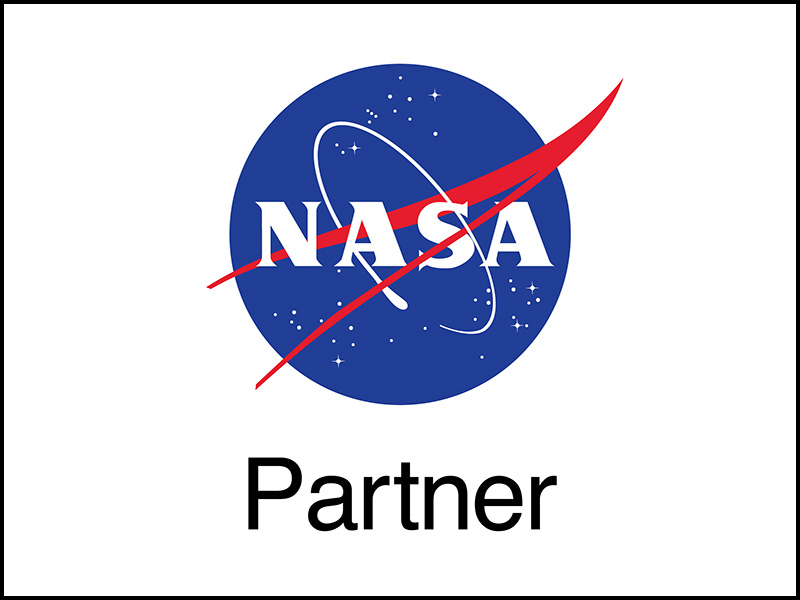WE CHOOSE SPACE! is a planetarium show for audiences of all ages who dream of space and wonder about human spaceflight after Shuttle. It's a show filled with real adventures for the near frontier. Positive, possible, and exciting -- this is a promise we can make to our children, our future astronauts.
It has been created by the Houston Museum of Natural Science, Home Run Pictures, and Tietronix with scientific oversight by Rice University. Astronauts Scott Parazinsky, Tom Jones and Gene Cernan, and veteran space reporter Walter Cronkite are your tour guides on this adventure to the completed International Space Station and to the past and future moon. Include fulldome imagery using OUR fisheye lens on the ISS!
WE CHOOSE SPACE! was funded by NASA under grant NNX10AK12G to the Louisiana Art and Science Museum and was reviewed by NASA scientists and engineers.
Music & Score by Shai Fishman - www.shaifishman.com
WE CHOOSE SPACE! was developed under the NASA Future Space Grant 09-2009CP4SMP-0047 [Louisiana Art and Science Museum (LASM), PI].
space science
general audiences, grades 2-12
24 min
English, Hindi, Korean, Spanish, Telugu
English, Spanish

RENT TO OWN! For a limited time all rental fees can be applied to show license purchase.
Education Guide
A complete education guide document containing all the components listed here that accompany this show including the script, questionnaires, activities, resources, and alignment to standards.-
Pre- and Post- show questionnaires:
The pre- and post- show questionnaires are intended to serve as a measure of effectiveness of both the show itself and the supplemental material. Prior to any information about the show being provided to students they should take the pre-show questionnaire. This should serve as an accurate gauge of their prior knowledge.Upon completion of viewing the show and the activities on the following pages, students should be given the same questionnaire. By comparing the pre-show and post-show scores, the overall effectiveness of the program can be determined.
Discussion Questions
The show may be stopped at break points for group discussion using the following questions, or you can discuss these after the show.
Lesson 1: Compare and Contrast the Sun, Earth, and Moon
Identify and compare the physical characteristics of the Sun, Earth, and Moon.Lesson 2: Space Exploration Timeline
Describe the history and future of space exploration, including the types of equipment and transportation needed for space travel.Lesson 3: What's happening in the sky?
Observe, describe, and record patterns of objects in the sky, including the appearance of the moon.Lesson 4: Living on the Moon
Identify and classify Earth's renewable resources, including air, plants, water, and animals; and nonrenewable resources, including coal, oil, and natural gas; and the importance of conservation.Lesson 5: Design of a lifetime
Investigate how organisms and populations in an ecosystem depend on and may compete for biotic and abiotic factors such as quantity of light, water, range of temperatures, or soil composition.
-
National Core Curriculum Standards in Science:
K-4 Standards: patterns of movement, motions and forces, resources
5-8 Standards: Transfer of Energy, Living Systems, Earth, Science & Technology, Personal Health
9-12 Standards: Forces, Matter, energy and organization, Environmental QualityTEKS (Texas Essential Knowledge and Skills):
document lists TEKS and where they can be found in the show -
Details how this show aligns with the Next Generation Science Standards, including whether the standard is a primary focus, secondary focus, or ancillary material.
ePlanetarium Show alignment with the Next Generation Science Standards (NGSS)
ePlanetarium Show alignment with Texas Essential Knowledge and Skill (TEKS)
The following resources can be used to find more information about topics covered in the show.
NASA Sites:
NASA - Beyond Earth: Expanding Human Presence Into the Solar System
The Space Place: A NASA website with spaced based games and activities.
NASA Museum Alliance: resources for museums, planetariums, and others
Other Sites:
We Choose Space: The show and additional resources can be found here
SpaceX: Commerical Space company
Stellarium: A free open source planetarium for your computer
Rice Space Institute: The Rice Space Institute provides a unique collaborative environment in which to meet the educational, research and technological challenges faced by the human and robotic exploration of space.
The George Observatory: The George Observatory, located about one hours drive south of Houston within scenic Brazos Bend State Park, is a satellite facility of the Houston Museum of Natural Science.
To order planetarium shows, visit our online store.

